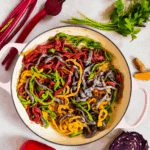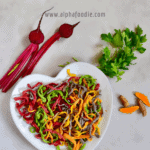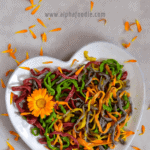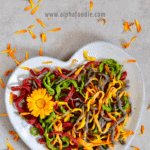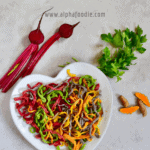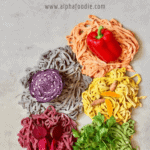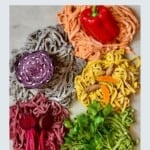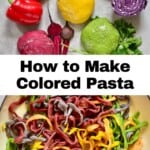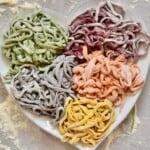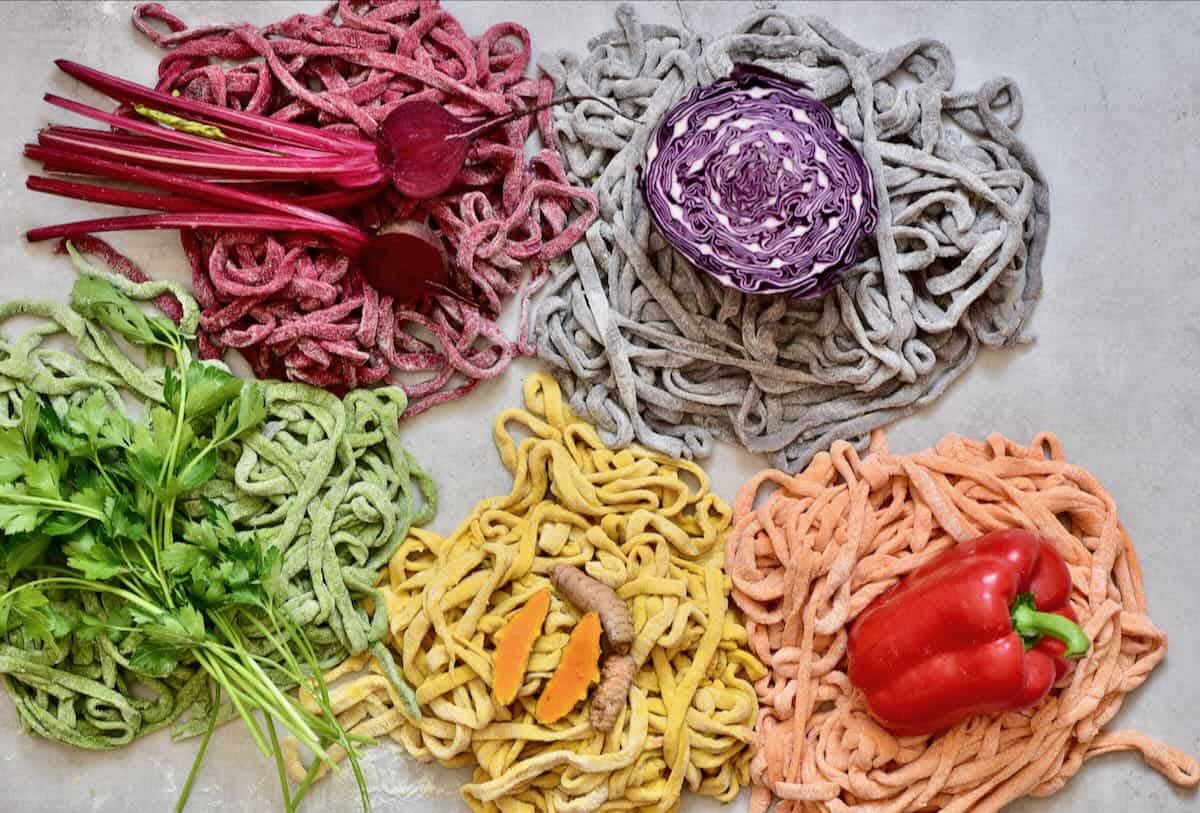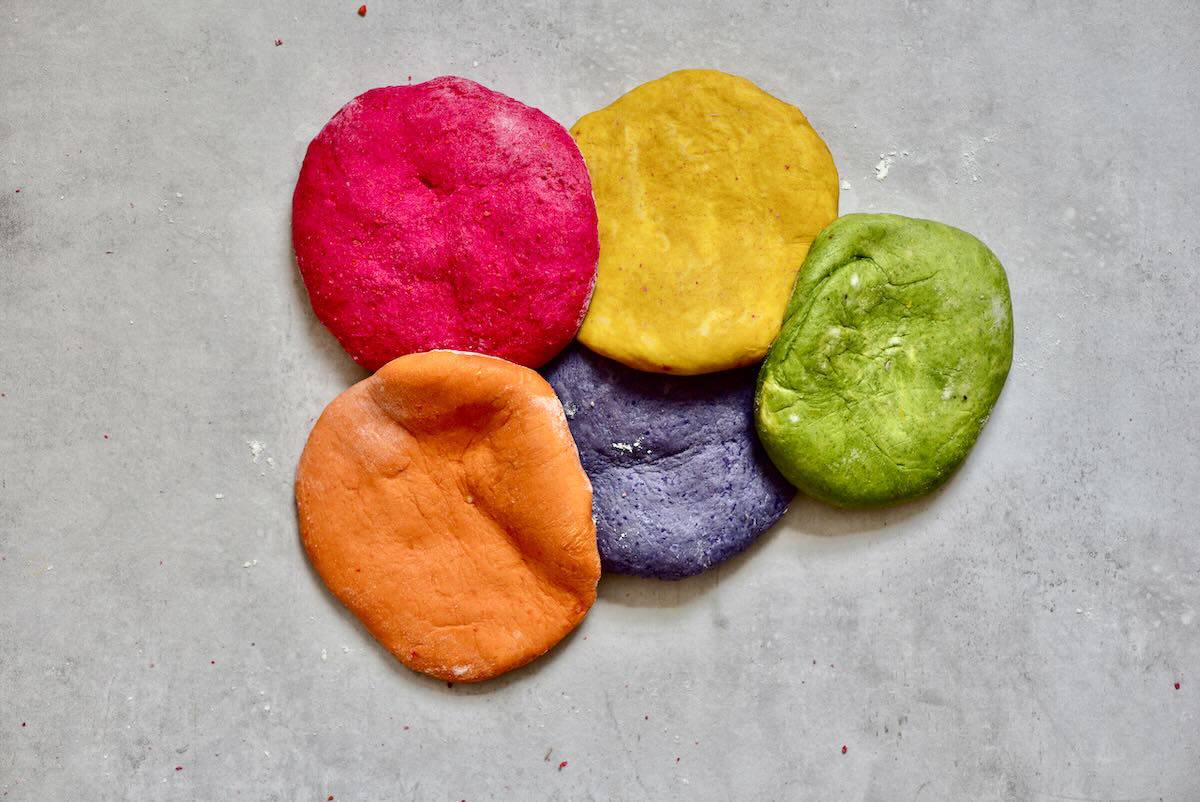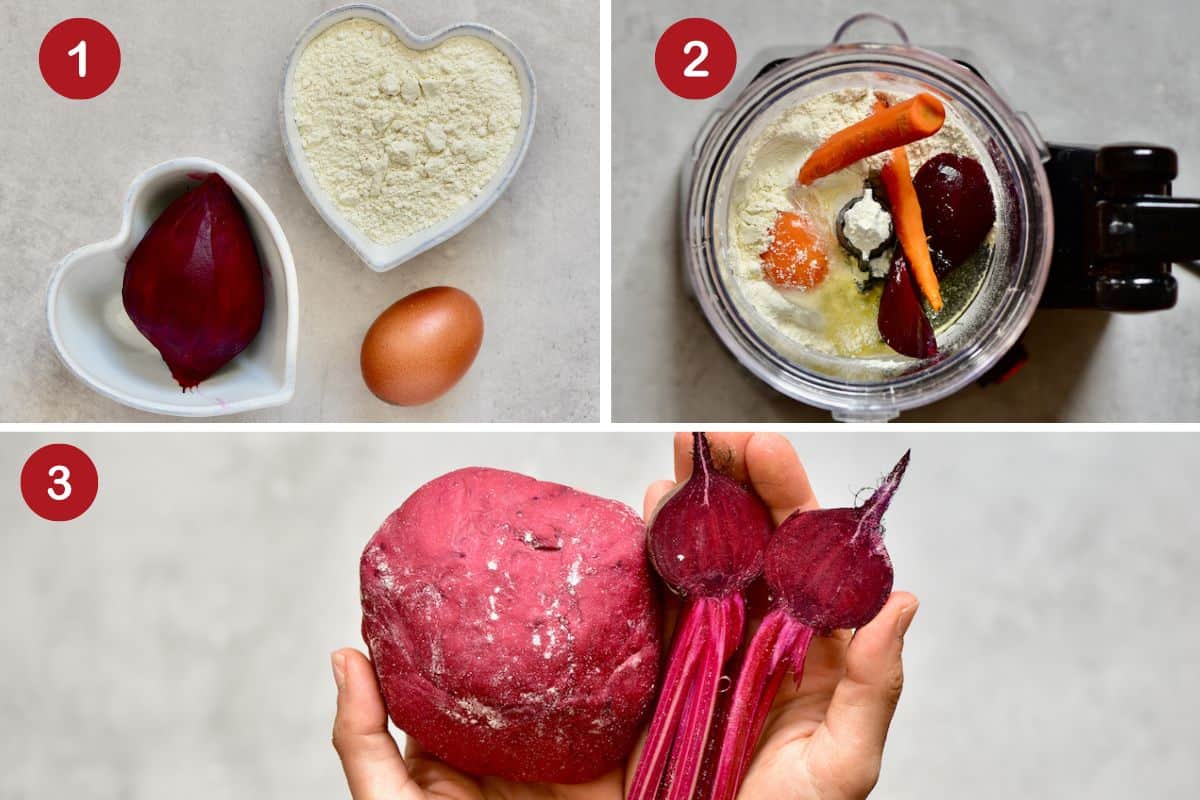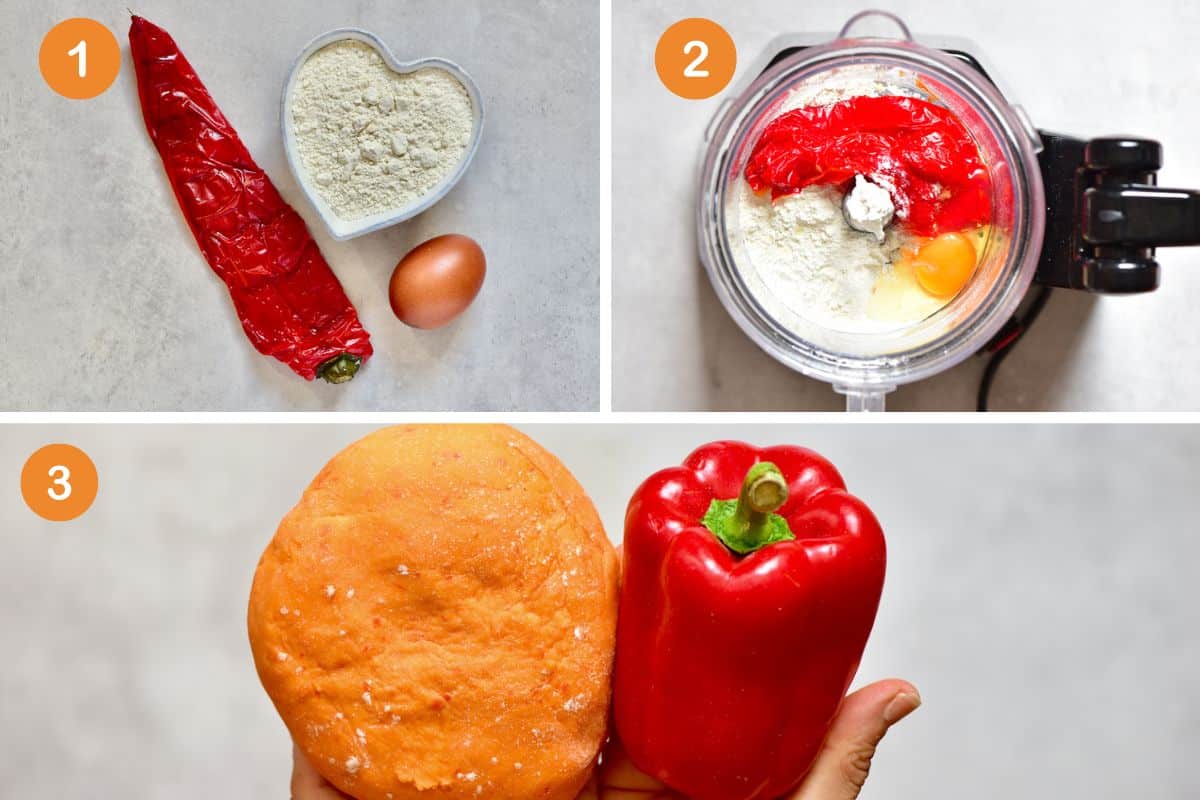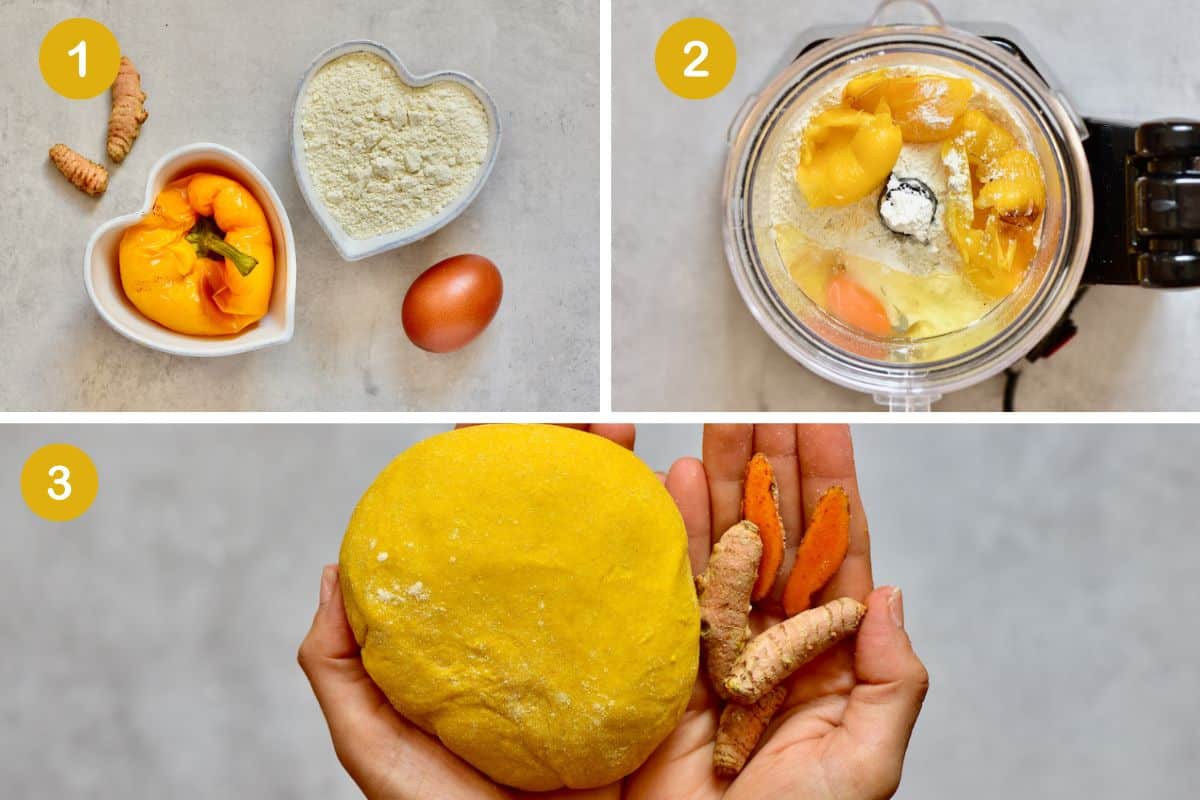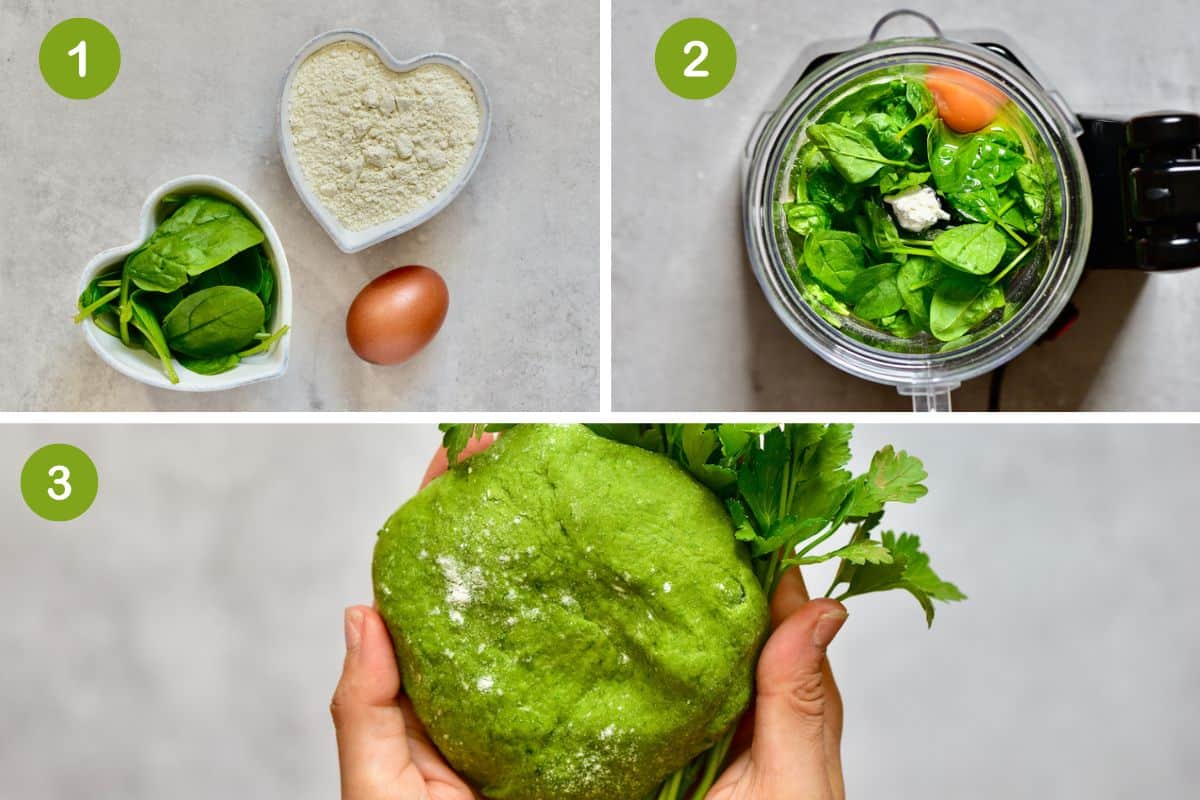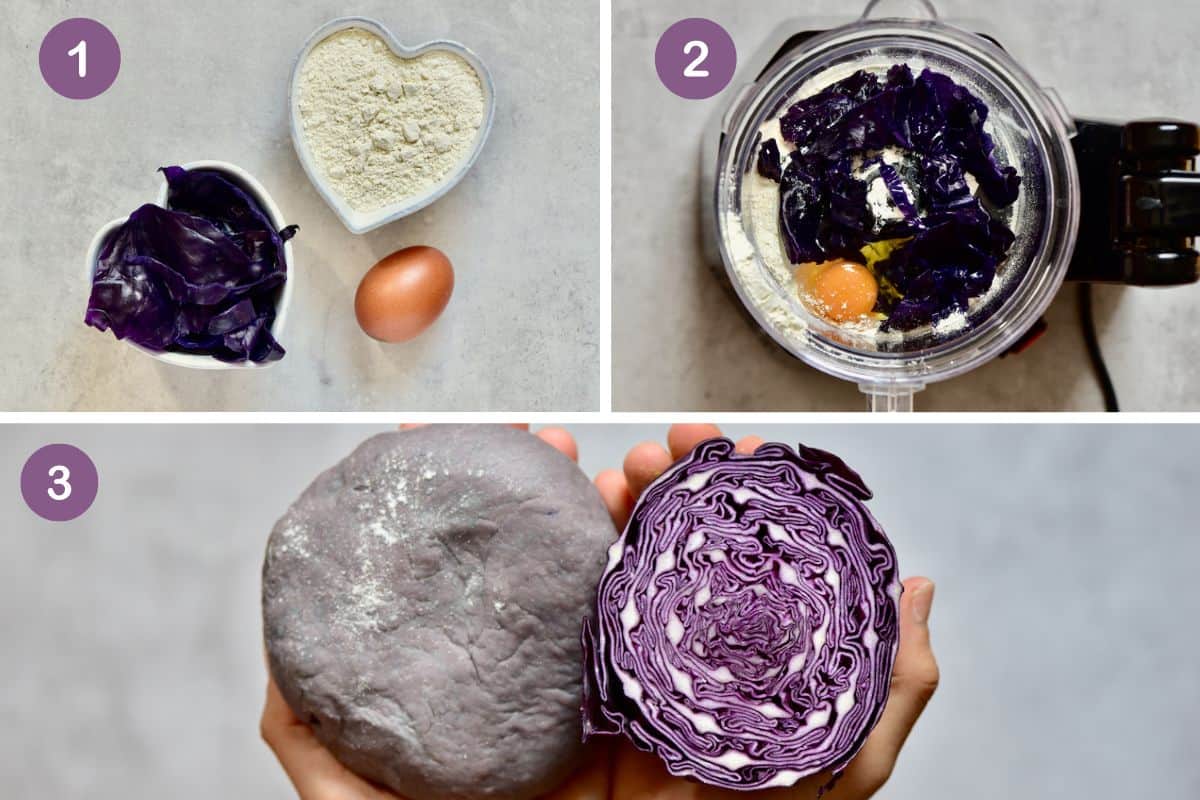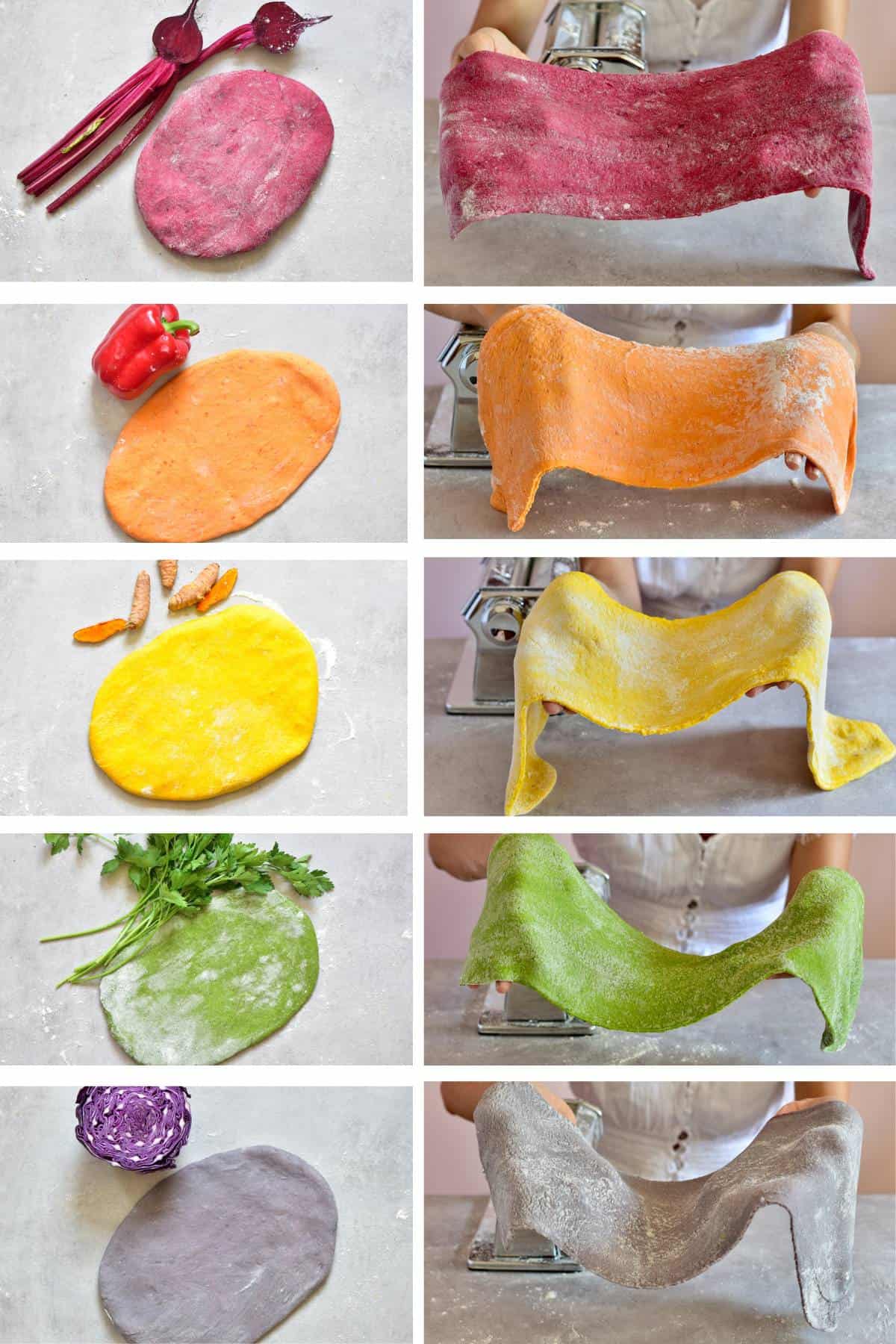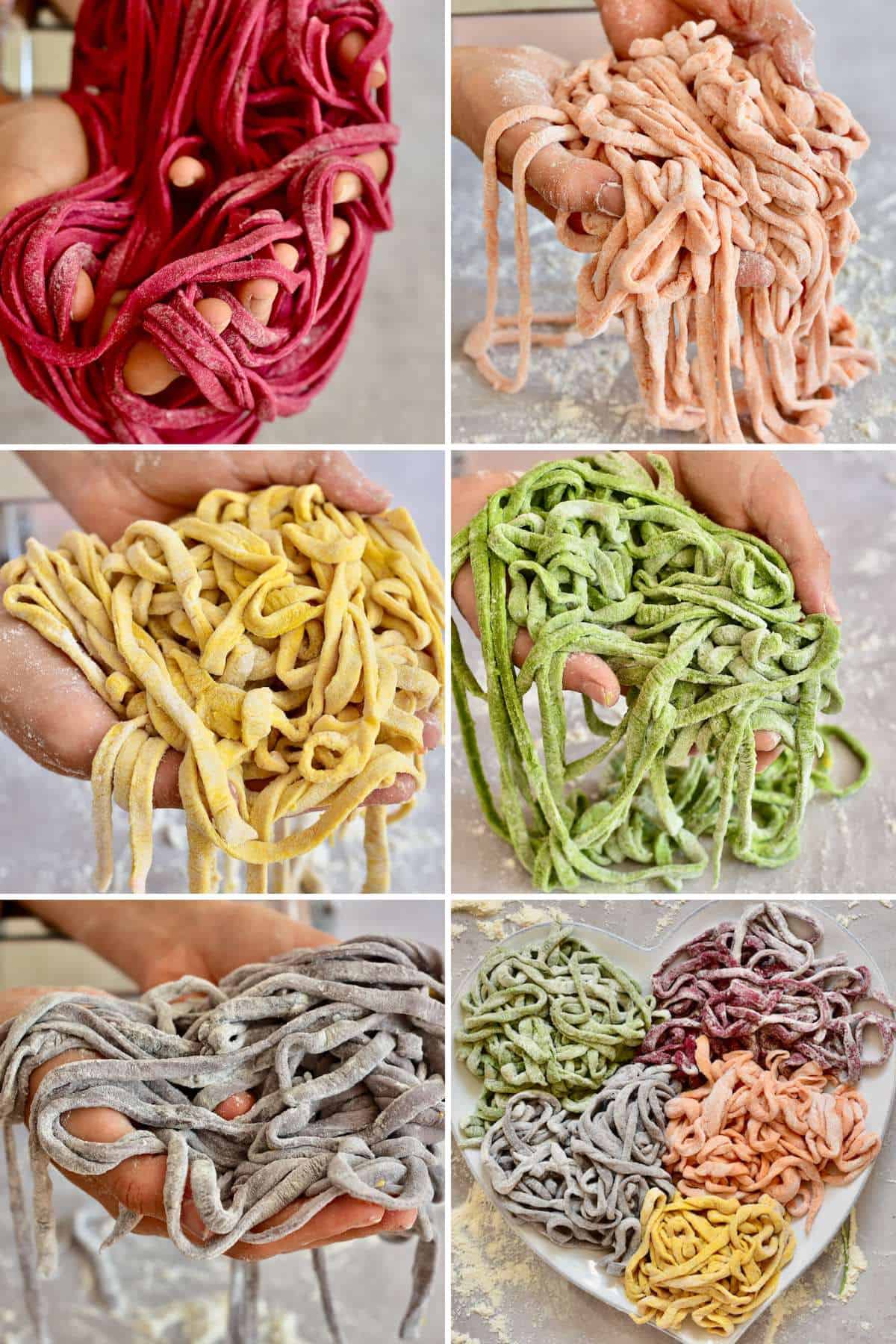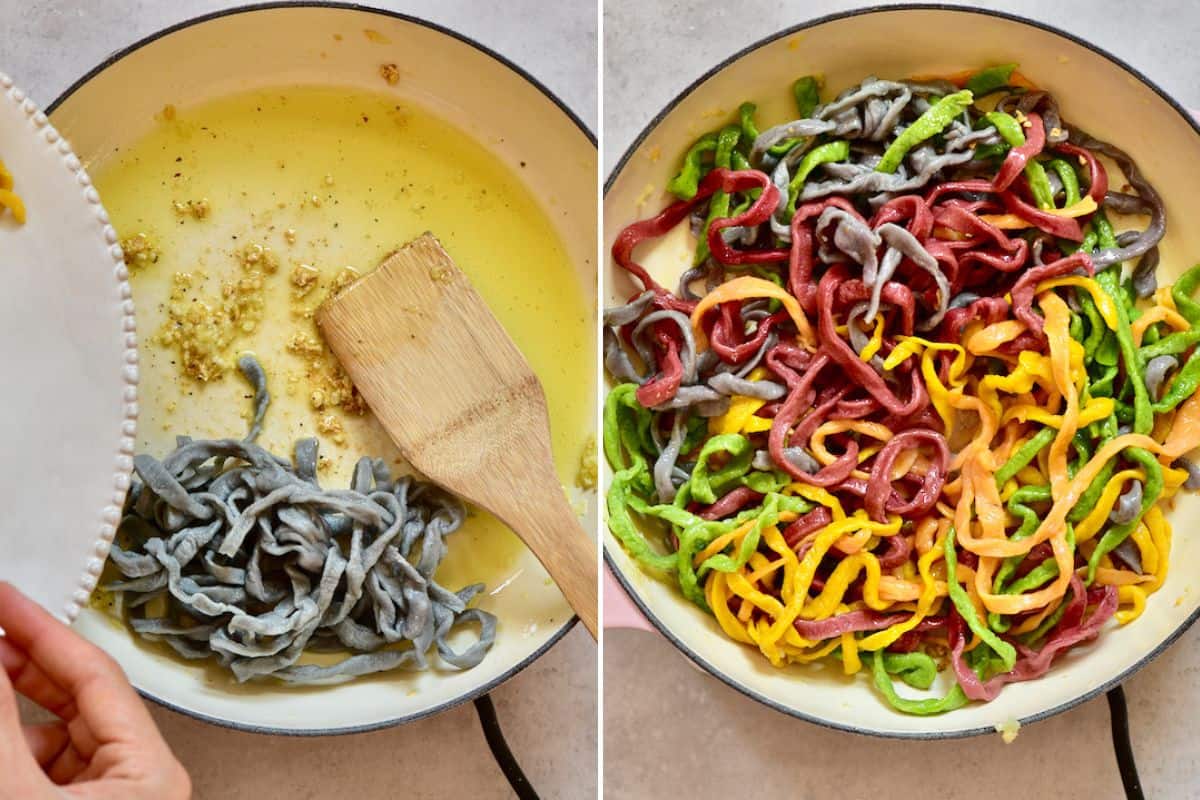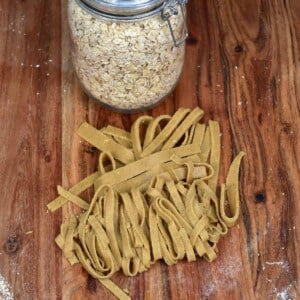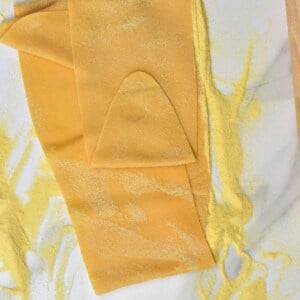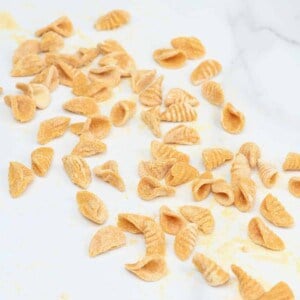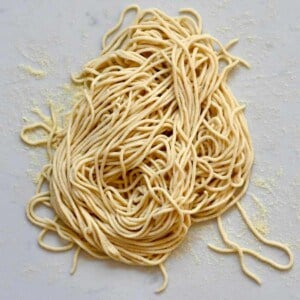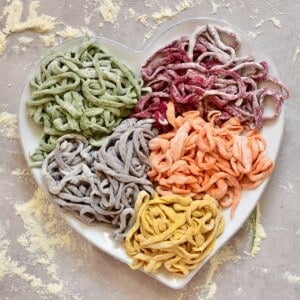Discover the joys of homemade, naturally colored pasta! This simple and customizable recipe enhances your meals both nutritionally and visually. The basic dough requires just 1 cup of 00 flour and one egg per portion, allowing for a variety of vibrant, natural colors without altering the taste. Made entirely from vegetables, these colors brighten your dish without affecting the flavor, making it perfect for anyone seeking a healthier, more appealing meal option. Plus, for more creative pasta ideas, check out my pappardelle flower pasta recipe.
How to color pasta naturally
Start by preparing the different all-natural colored pasta doughs. You can choose to go with only one color or as many colors as you’d like. Just keep in mind that you have to add 1 cup of flour and 1 egg for each color and per portion. You might also need to add a bit more flour to wetter ingredients (like the peppers) so that the dough is not sticky. For Red Color Pasta Dough For the red pasta, use 1 medium-sized boiled beetroot. You can also add some boiled carrots to adjust the redness of the beetroot. Blitz the egg, flour, and vegetables in a high-speed blender or food processor until you obtain a smooth dough. Knead the dough with your hands to form a smooth ball. If it sticks to your hands, add a bit of flour. Leave it to rest at room temperature (if wanting to save the dough for later then wrap it in plastic wrap and chill it in the fridge). For Orange Color Pasta Dough For the orange pasta, use 1 red pepper. You first need to roast it in the oven for 10-15 mins at 200C. Then blend and knead the same way as for the beetroot pasta. Note: You might need to add a bit more flour as the pepper has high water content. We don’t want sticky dough. Just add the flour as you blend. For Yellow Color Pasta Dough you can use either 1 roasted yellow bell pepper or turmeric (either powder or fresh root). If you choose to go with the pepper, you can also add a pinch of turmeric powder to make it a brighter yellow. Repeat the same process as above, blending, kneading, and resting the dough. Add a bit more flour, if needed (as the yellow pepper is quite moist). For Green Color Pasta Dough Use either 1 cup of spinach or 1 cup of parsley. I tried both and each of them makes a great green color. Repeat the same process of blending, kneading, and resting. For Purple Color Pasta Dough You can use either 1 cup of boiled red cabbage or 1-2 baked purple potatoes. You can also add a pinch of baking powder to the cabbage to adjust the hues of purple. And voila, you have your dough! Rolling Out Your colored Pasta Dough After the colored pasta dough has rested for approximately 30 minutes, begin by rolling it out with a rolling pin until it’s thin enough to pass through the pasta machine on the ‘0’ setting. Continue to feed the dough through the setting, folding it in half each time, until it achieves a uniform shape. Lightly flour the dough throughout the process to prevent sticking. Gradually, you can further thin the dough using the machine’s settings. Alternatively, if you are using a rolling pin throughout, ensure to roll and stretch the dough into even, thin sheets. Cutting and Shaping Once you have obtained thin sheets of pasta dough, you can proceed with cutting it. I chose to cut it into long ribbons, like Tagliatelle or Pappardelle, but you can cut it in different shapes/sizes. Be generous with flouring the pasta, so it doesn’t stick together. To cut it into long strips, you just need to fold the pasta a couple of times and then just cut it with a knife. Or, if you are using the pasta machine, choose one of its other settings for cutting. Cooking Naturally Colored Pasta Start by preparing a simple dressing: sauté chopped garlic in olive oil until fragrant. Then, cook the pasta separately by color in boiling water for 3 minutes to avoid the color bleeding, especially from the red pasta. Drain and immediately toss with the garlic dressing, or your choice of sauce, and serve.
Watch how to make it
If you try this recipe, let me know how it goes in the comments below. I’d appreciate a recipe card rating and would love to see your recipe recreations – tag me on Instagram @Alphafoodie!
Drying: If you’ve made fresh colored pasta, you can let it dry for several hours in a cool, dry place before storing it. Spread it out on a drying rack or a clean cloth, ensuring the pieces don’t touch each other to prevent sticking and color transfer. Airtight Containers or Bags: Once the pasta is dry, place it gently in airtight containers or resealable plastic bags. If you have different colors, store each color separately to prevent colors from bleeding into each other. Refrigeration: If you plan to use the pasta within a few days, keep it in the refrigerator. This is especially important for pasta that hasn’t been completely dried, as the moisture can lead to spoilage. Freezing: For longer storage, freeze the pasta. Lay the pieces flat on a baking sheet to freeze them separately, then transfer them to airtight containers or bags once frozen. This prevents the pasta from sticking together.
